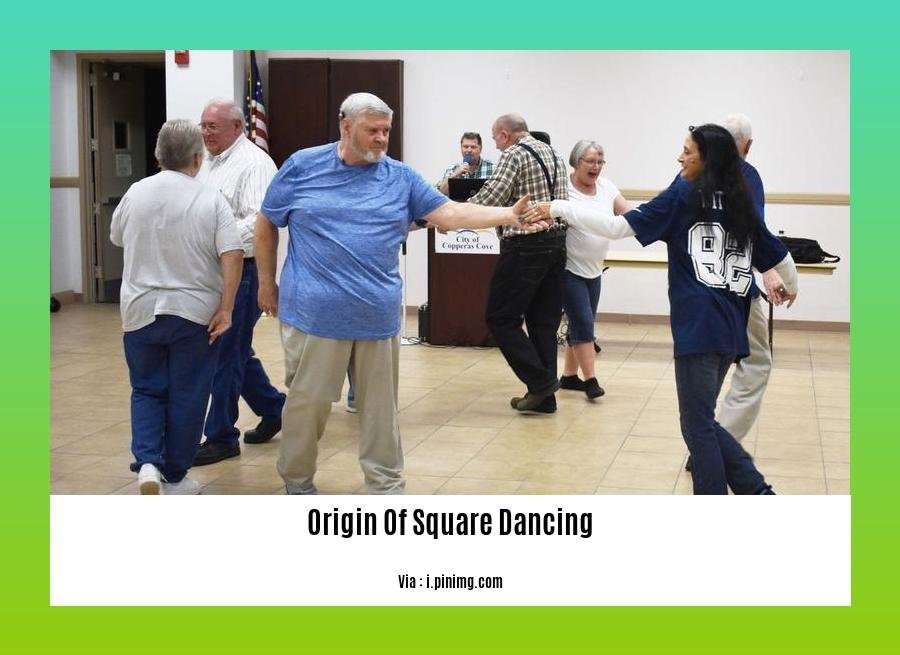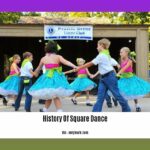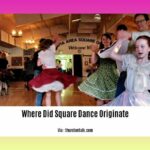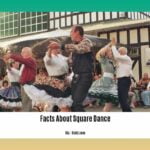Embark on an enthralling journey into the origins of square dancing in [Origin of Square Dancing: A Historical and Cultural Exploration]. Delve into the depths of history and culture as we unravel the fascinating tapestry of this beloved dance form, tracing its roots across diverse civilizations and exploring its enduring significance. Join us as we uncover the origins, influences, and captivating stories that have shaped the world of square dancing.
Key Takeaways:
- Originated in England in the 16th century.
- Derived from folk dances, including the Morris dance.
- Influenced by the French Quadrille dance.
- Introduced to America by English settlers and European immigrants.
Origin Of Square Dancing
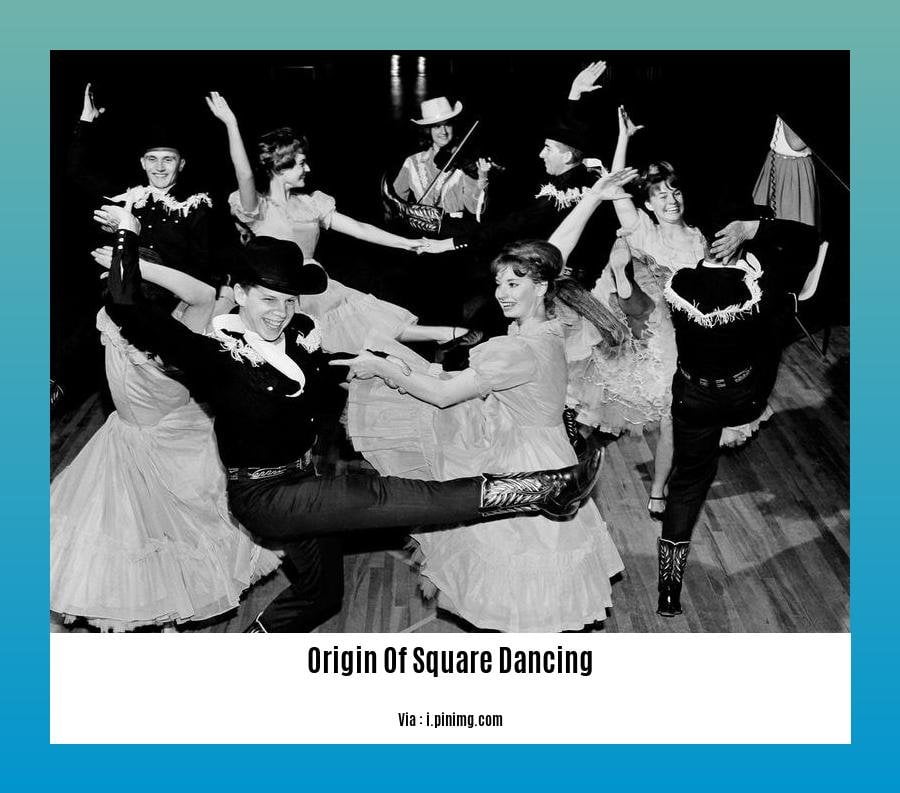
Let’s venture back to the lively 16th century, the era of Elizabeth I. It was here in the heart of England that the genesis of square dancing took form. These early dance forms were deeply rooted in tradition, drawing inspiration from folk practices and communal celebrations.
One significant influence on square dancing was the Morris dance, a vibrant folk dance characterized by its energetic steps and colorful costumes. The Quadrille, a French dance popular in aristocratic circles, also played a role in shaping square dancing. Its elegant formations and intricate patterns added a touch of refinement to the emerging dance.
As English settlers embarked on their journey across the Atlantic, they carried the seeds of square dancing to the New World. These dances found fertile ground in the social fabric of frontier communities, becoming a beloved pastime at gatherings and celebrations. Over time, square dancing evolved and took on regional variations, adapting to the diverse cultural landscape of America.
Through the lens of history and cultural anthropology, we gain a deeper understanding of Origin Of Square Dancing. Its roots lie in the vibrant dance traditions of the past, shaped by the influences of various cultures. Today, square dancing continues to captivate hearts and spread joy, serving as a testament to its enduring legacy.
History of square dance explores the captivating origins and evolution of this lively folk dance.
Learn about the origins and the role of the History Of Square Dance Caller in this comprehensive guide.
Discover the significant role of History Of Square Dancing In Schools in promoting this dance form among young learners.
Explore the fascinating Brief History Of Square Dancing and uncover its journey from folk tradition to global phenomenon.
Intrigued about where this lively dance originated? Dive into the captivating Where Did Square Dance Originate article.
Uncover fascinating Facts About Square Dance that will amaze and intrigue you, revealing its cultural significance and hidden gems.
Evolution in the American Frontier
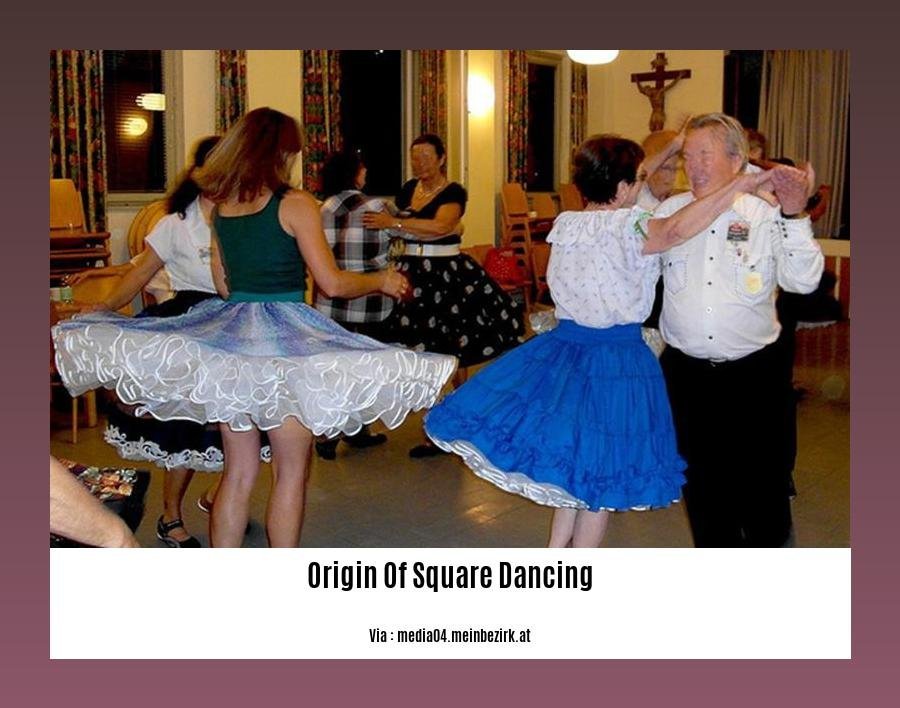
Imagine the American frontier, a land of rugged landscapes and pioneering spirits. In this setting, square dancing found its footing, evolving into a vibrant expression of community and cultural exchange.
From its European roots, square dancing embarked on a westward journey, carried by settlers eager to recreate familiar traditions and forge new ones. As they traveled, the dance absorbed influences from Native American and African cultures, creating a unique and dynamic blend.
Eastern square dancing, popular in the Appalachian Mountains, blended with the lively rhythms of African American music. Western square dancing, prevalent in the vast prairies, incorporated elements of Native American powwows, creating a style that celebrated the spirit of the frontier.
Today, square dancing remains a symbol of American identity, cherished for its historical significance, cultural diversity, and joyful camaraderie.
Key Takeaways:
- Square dance evolved on the American frontier, blending European, Native American, and African influences.
- Eastern square dancing incorporated African American rhythms, while Western square dancing integrated elements of Native American powwows.
- Settlers played a crucial role in bringing and adapting square dancing to the frontier.
- Square dancing reflects the cultural diversity and community spirit of the American West.
Relevant URL Sources:
- The Slave Roots of Square Dancing – JSTOR Daily
- Square dance | Calls & Figures, Folk Dance, Americana | Britannica
Codification and Standardization
Square dance, with its deep roots in communal festivities, was initially a fluid activity, varying from one region to another. However, with the advent of globalization and the desire to preserve its rich heritage, a codification and standardization movement emerged.
Organizations like the National Square Dance Convention (NSDC) took the lead in establishing standardized rules and terminology, creating a common language for square dance enthusiasts across the country. These efforts aimed to ensure the dance’s precision, uniformity, and accessibility, ensuring its continuity and growth.
Key Takeaways:
- Codification and standardization emerged as the dance gained popularity globally.
- NSDC played a pivotal role in establishing uniform rules and terminology.
- Standardization aimed to preserve the dance’s heritage and make it accessible to a wider audience.
Relevant URL Sources:
- Square Dance – History and Types of Square Dance
- The Slave Roots of Square Dancing – JSTOR Daily
Contemporary Variations and Interpretations
Today, square dancing continues to evolve and adapt to the changing tastes and preferences of dancers. Contemporary Variations and Interpretations of square dancing have emerged, offering new and innovative ways to experience this beloved dance form.
Originality and Improvisation
Contemporary Variations and Interpretations of square dancing often incorporate original choreography and improvisation. Dancers break away from traditional patterns and create unique sequences that showcase their creativity and personal style.
Asymmetrical Formations:
Modern square dancing groups experiment with asymmetrical formations, where the number of couples on each side of the square is different. This adds a fresh dynamic to the dance, creating unexpected patterns and movements.
Dance Influences and Fusion
Square dance has always embraced influences from various dance styles. Contemporary Variations and Interpretations have further expanded this fusion, incorporating elements from hip-hop, ballet, and modern dance. These hybrid styles create exciting and visually captivating performances.
Key Takeaways:
- Square dancing continues to evolve with Contemporary Variations and Interpretations.
- Dancers incorporate original choreography and improvisation to express their creativity.
- Asymmetrical formations and fusion with other dance styles add fresh dynamics and appeal to the dance.
Relevant URL Sources:
- World Square Dancing Society
- Square Dance History and Evolution
FAQ
Q1: Where did square dancing originate?
A1: Square dancing originated in England in the 16th century, evolving from earlier folk and social dances such as the Morris dance.
Q2: How was square dancing introduced to America?
A2: Square dancing was introduced to America by English settlers and European immigrants in the 18th and 19th centuries.
Q3: What are the key characteristics of square dancing?
A3: Square dancing is a traditional folk dance performed by four couples arranged in a square, with a caller giving commands to the dancers.
Q4: How did square dancing evolve over time?
A4: Square dancing evolved into two distinct styles in America: Eastern and Western (Cowboy), and was also influenced by African and Native American cultures.
Q5: What is the significance of square dancing?
A5: Square dancing is a beloved dance form that has social, cultural, and historical significance, with over half of the US states adopting it as their official folk dance.
- Senior at What Age: Benefits & Eligibility Guide - March 29, 2025
- Unlocking Senior Benefits: How Old is a Senior? Your Complete Guide - March 29, 2025
- Master Russian Politeness:A Guide to Saying Please - March 29, 2025
